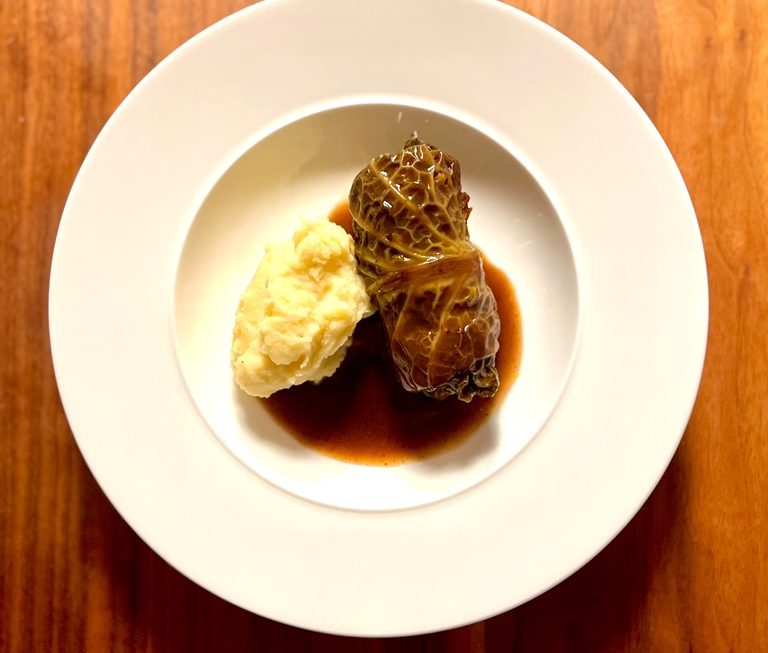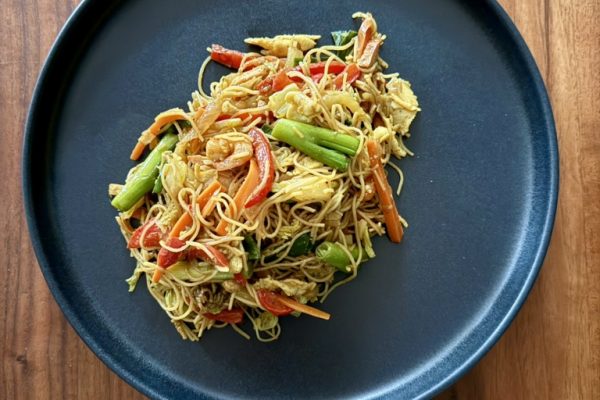Wet and cold weather, we feel like classic home cooking: “Wirsingrouladen” (German) or “Wirsingwickel”, as they are called in Bavaria. More often white cabbage is used, in which case it would be “Kohlrouladen” or “Krautwickel”. Both are delicious.
This dish is a bit of work and takes time. This will also be a more detailed recipe, because at the same time we will explain how to make a fine sauce without ready-made products.
Traditional cabbage rolls contain meat. However, Madame Chilipepper is working on a recipe for a vegetarian version.
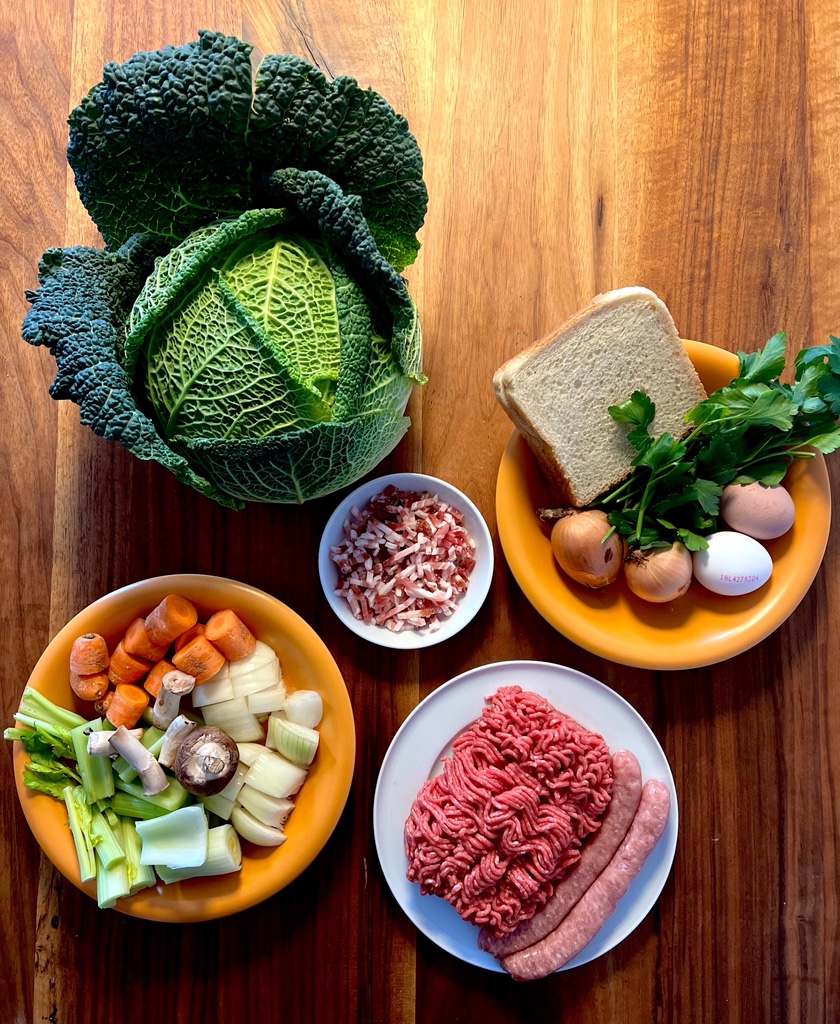
Cut the stalk out of the savoy or white cabbage with a small, sharp knife. The stalk is hard, so please work very carefully so as not to injure yourself. First stab the knife all around the stalk at an angle of about 45 degrees and then cut out the stalk in a cone shape.
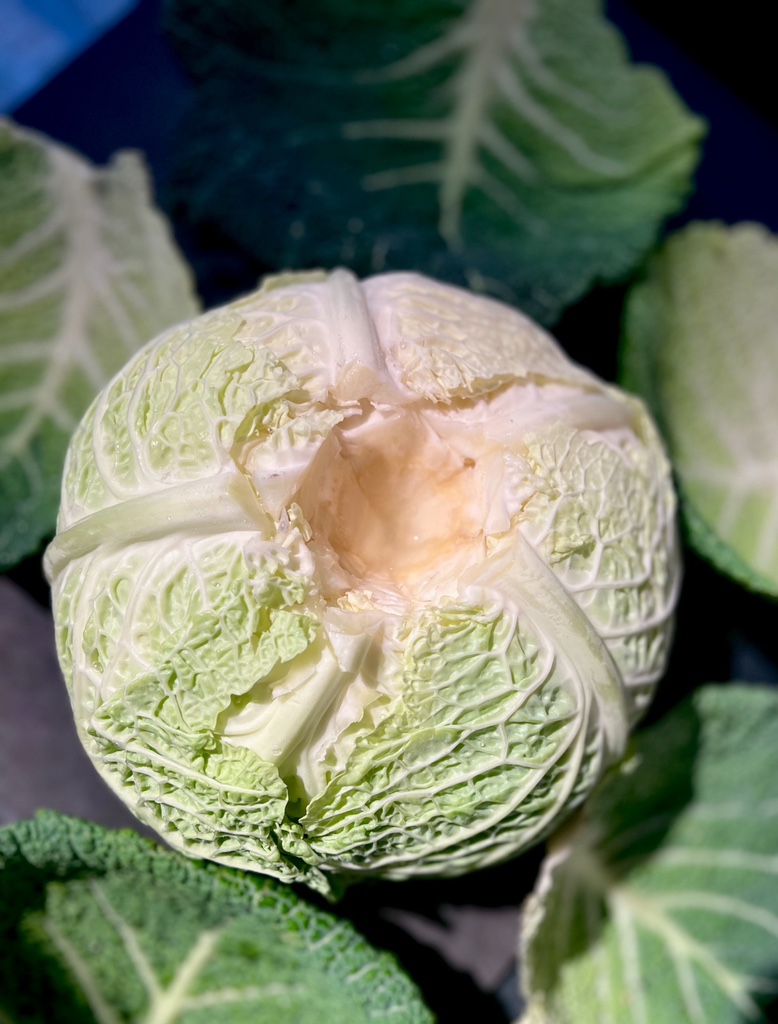
If you tried to remove more leaves from the raw cabbage, they would tear. You would also hardly be able to roll the leaves. They are therefore blanched first:
Bring salted water to the boil in a large pot and place the entire cabbage with the leaves already separated in it, with the stalk facing up. If you are using a white cabbage, you may stick a meat fork (carving fork) or similar tool into the stalk to handle it when loosening the leaves. This is not necessary with the less hard savoy cabbage. It is sufficient from now on for the water to simmer just below the boiling point.

Leave each loosened leaf in the pot for about 2 more minutes, then take them out and put them in cold water to stop the cooking process and so that they keep a nice colour. Then spread them out and cut the thick stalk flat at its lower end. This will allow you to form nicer rolls later than if you cut out the stem.
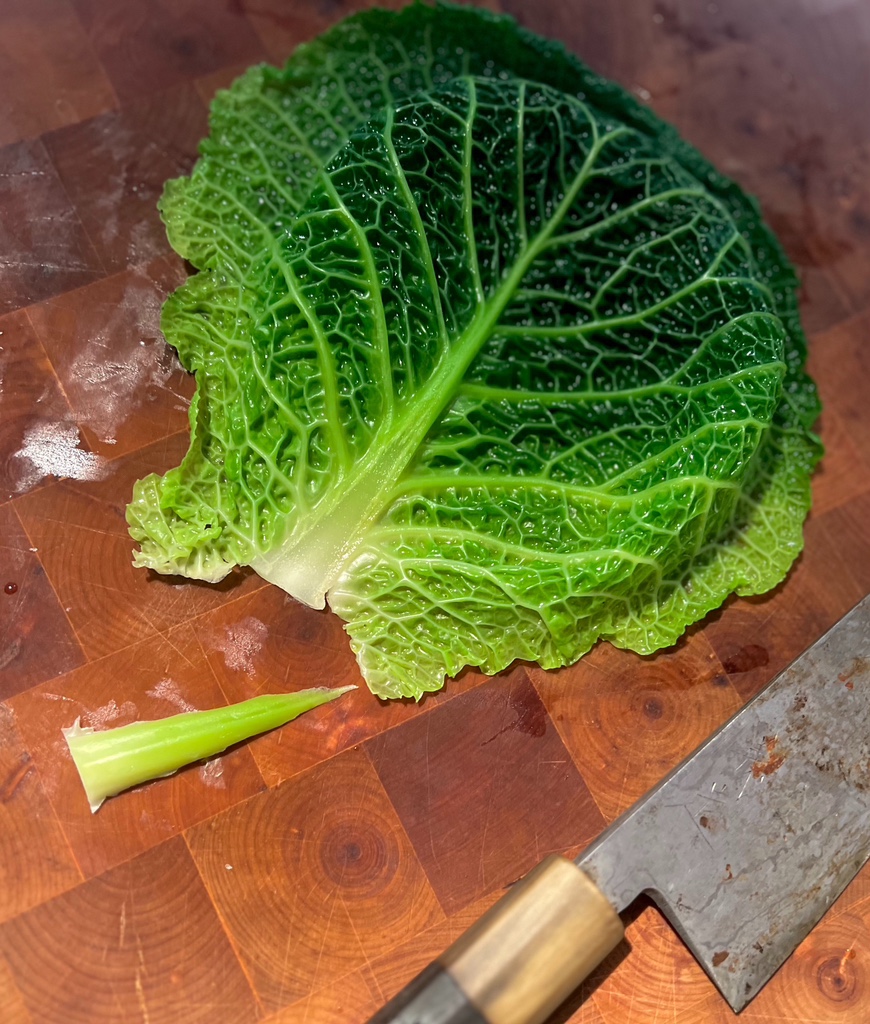
We want to form 8 rolls and therefore prepare 10 leaves, just in case. This took about 15 minutes in total. We will process the rest of the savoy cabbage into a vegetable stew over the next few days.
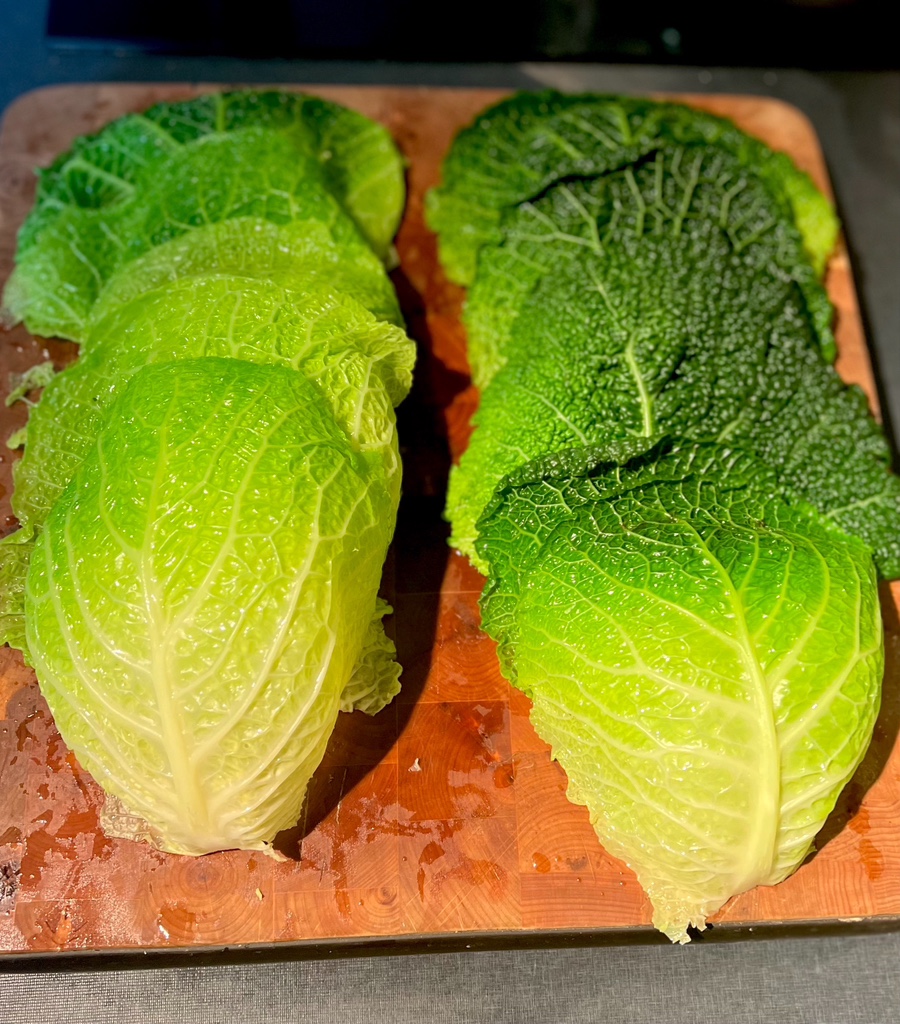
Now for the filling:
Finely chop an onion and sauté it with a little butter until translucent. Separate the leaves from the stems of the parsley and chop them finely – but do not throw away the stems, they go into the sauce. Remove the crusts from slices of toast and then cut the bread into small cubes and soak in the milk. We also like to use some smoked raw sausage. We cut it in half lengthwise and then use the back of a knife to scrape the sausage meat from the casing and cut it into small pieces as well.
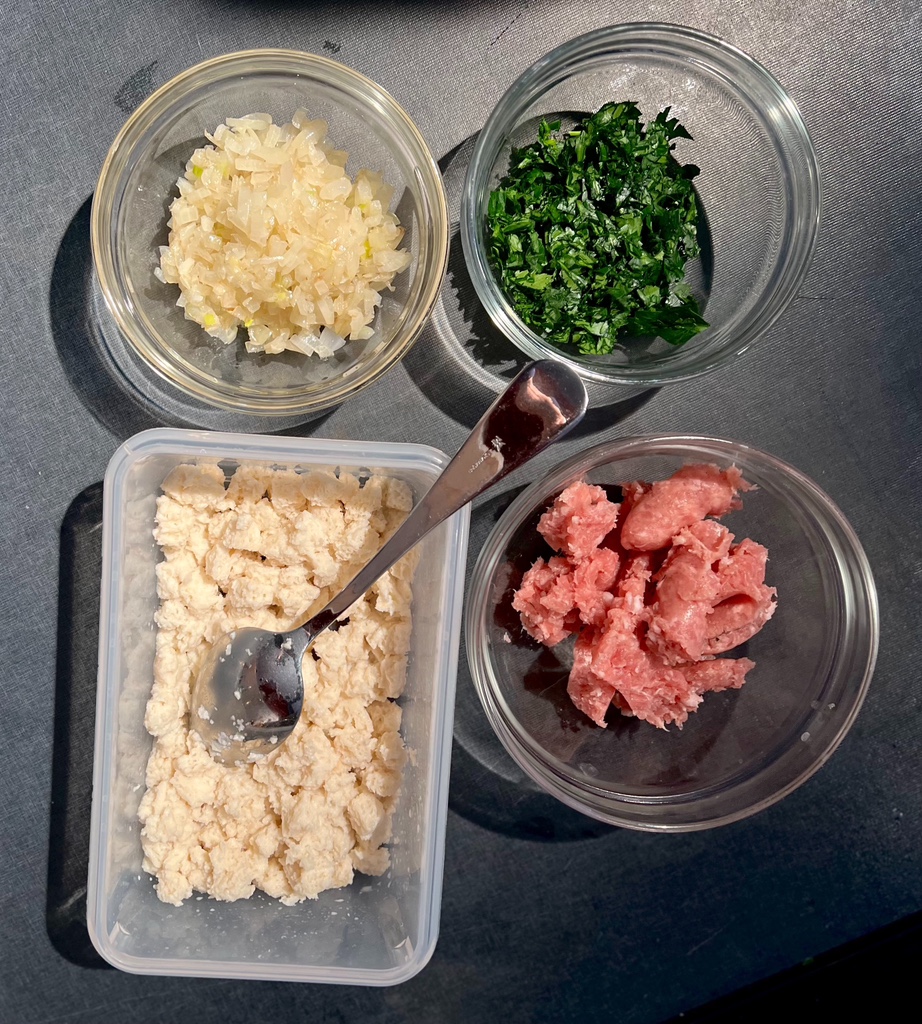
Now mix these ingredients with minced beef, eggs and some medium hot mustard. Add dried marjoram, salt and pepper as spices. We also like to grate the zest of half an organic lemon into this mixture. You can weigh out the salt: 1 g per 100 g of filling.
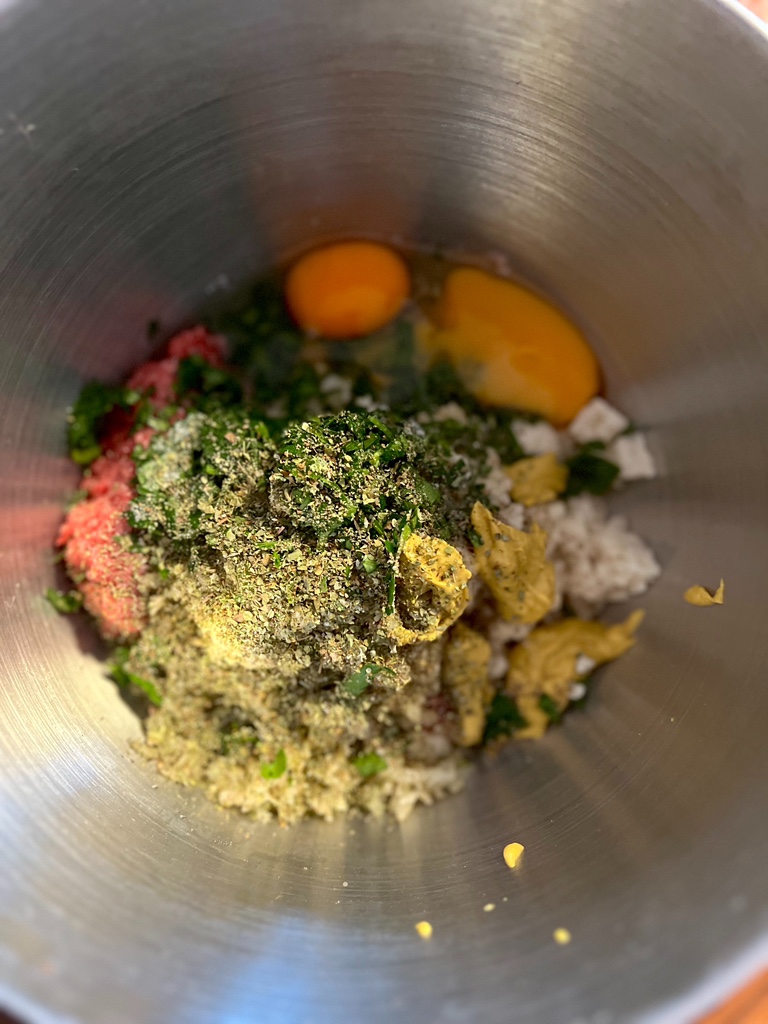
The filling is best mixed with your hands. If you use a food processor, set it to a low speed so that the mixture does not become too firm later.
Now the rolls can be shaped. For savoy cabbage, we place a leaf with its inside facing up – this way the more prominent textured side of the leaf is on the outside. We divide the weight of the filling by eight and weigh out one portion each, which we shape into a cylinder and place on one half of the leaf, with its stalk facing away from us.
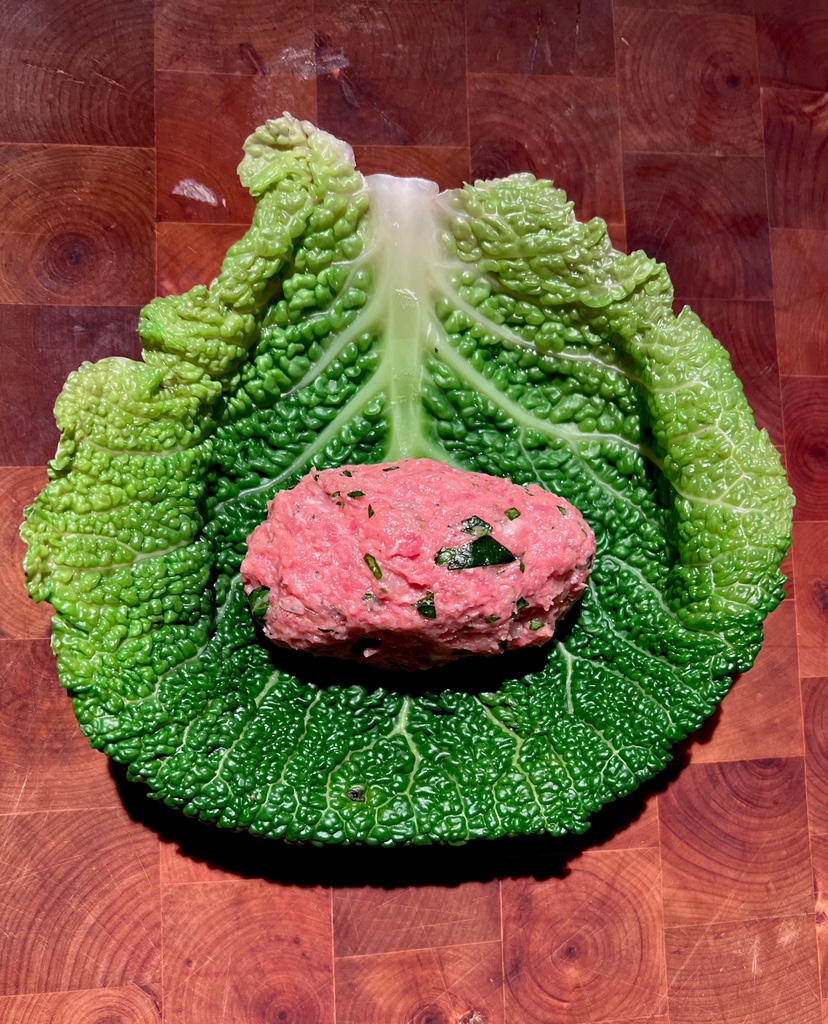
Simply fold the sides of the sheet from the right and from the left towards the middle and then roll up the packet away from you so that the roulade comes to rest on the stalk. Make sure to roll up the filling tightly, the roulade should be completely filled.
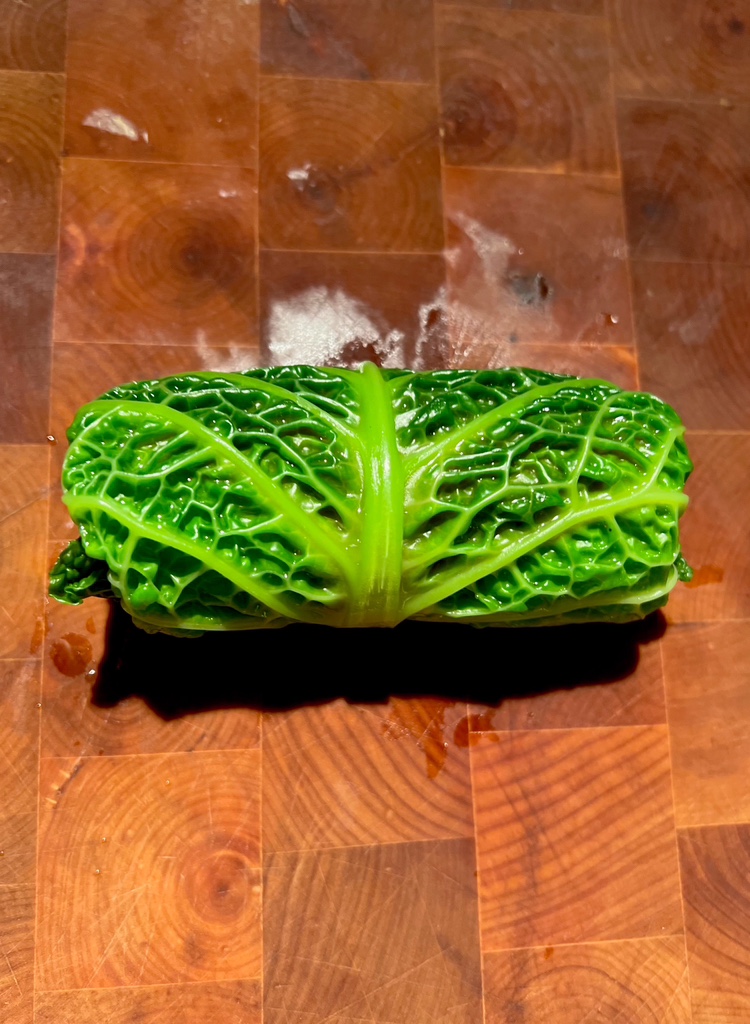
We ended up with 10 roulades, which didn’t bother anybody. We needed about 30 minutes for these steps, so 45 in total.
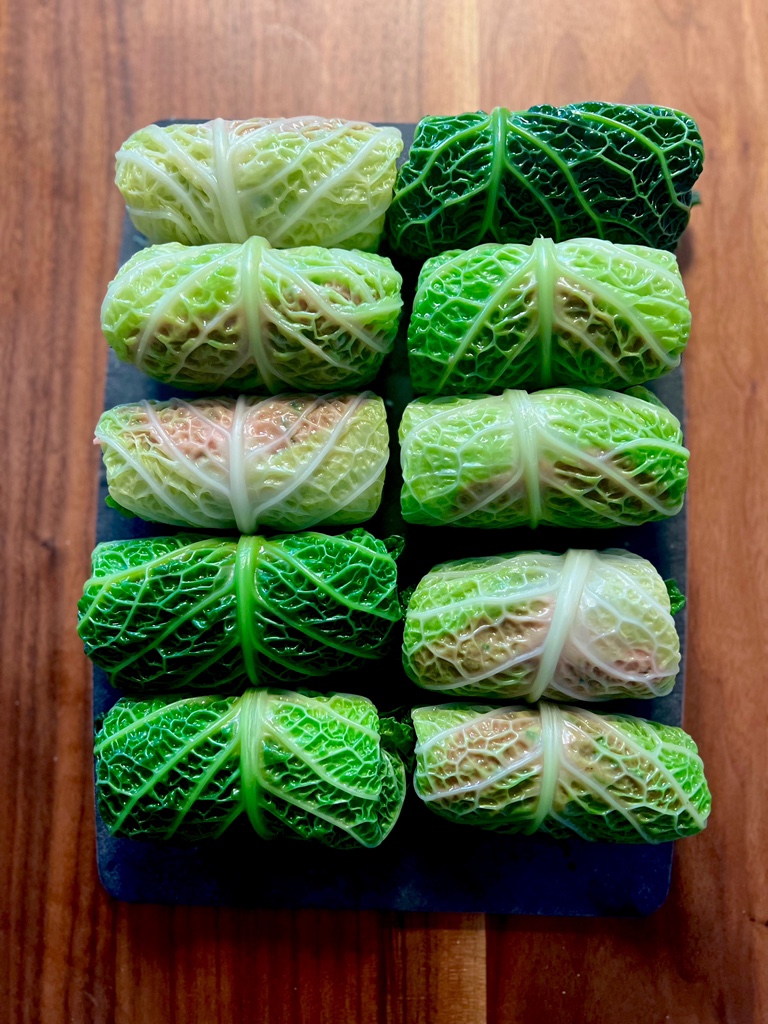
Fry the little beauties with some oil in a frying pan over medium-high heat, first on the seam so that it closes up. Take your time, the savoy cabbage (and especially the white cabbage, if you are using it) should be roasted well all over and be allowed to take on a dark colour, it will then develop a particularly nice flavour. Our rolls took just over 10 minutes to achieve this.
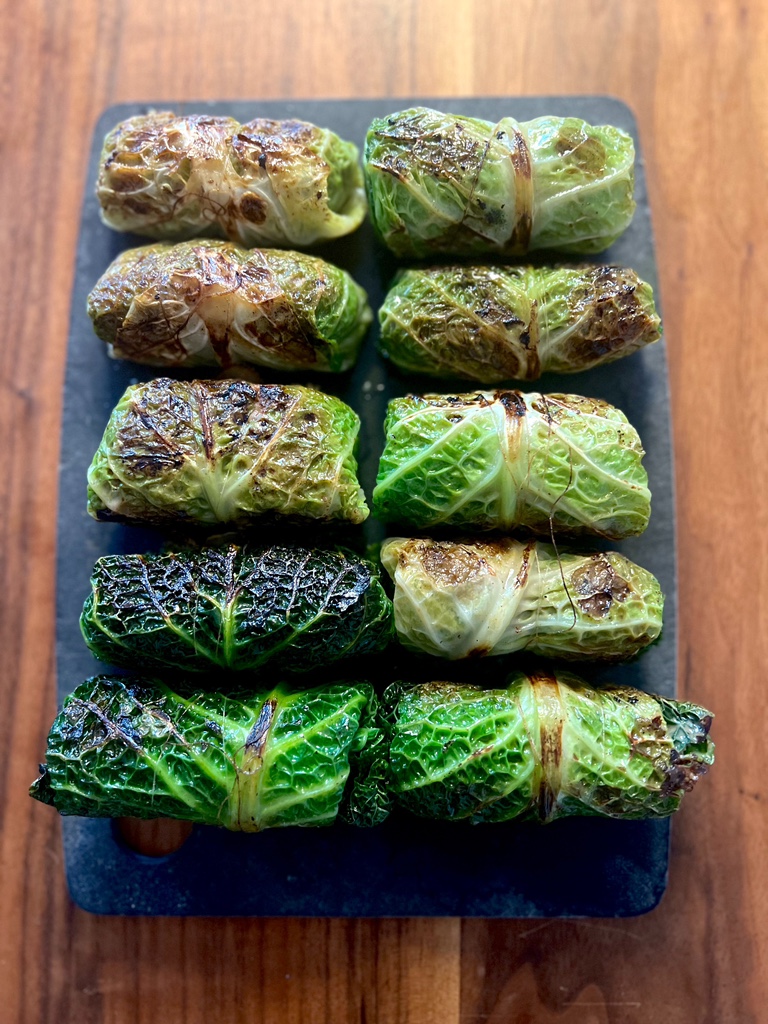
Now for the sauce:
Cut the onion, carrot and celery into large pieces, the carrot with the skin. Other leftover vegetables can also be added – in our case the stems of mushrooms went into the mix.
These vegetables are now sautéed in the pan with a little oil, they may also brown slightly. Finally, use a little water to dissolve the browned flavours on the bottom of the pan.
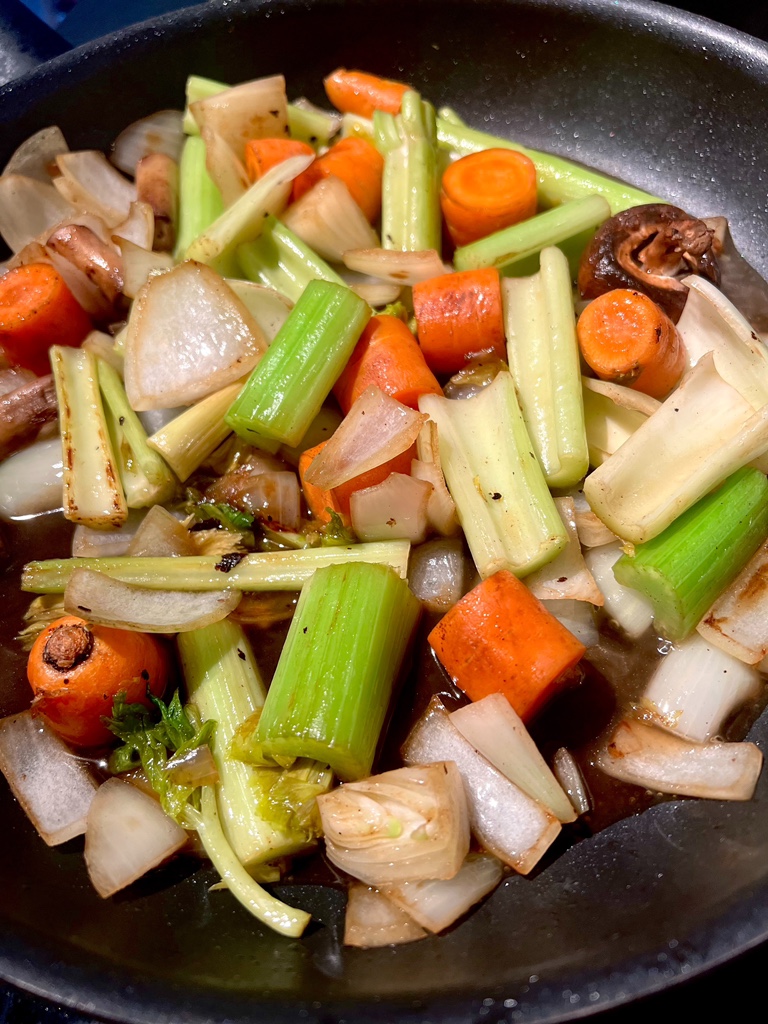
In a large pot (we use a cast-iron casserole), fry diced bacon over medium-high heat without adding any more fat. Then dust the bottom of the pot thinly with icing sugar, which quickly melts and caramelises.
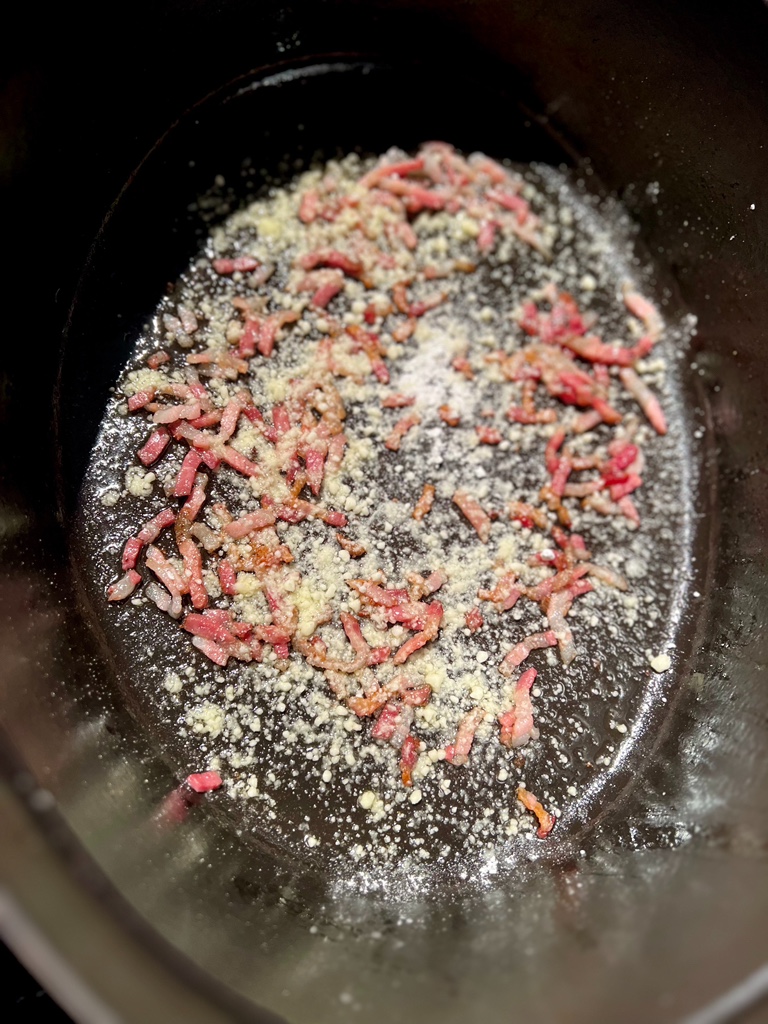
Now add some tomato paste and stir-fry briefly as well.
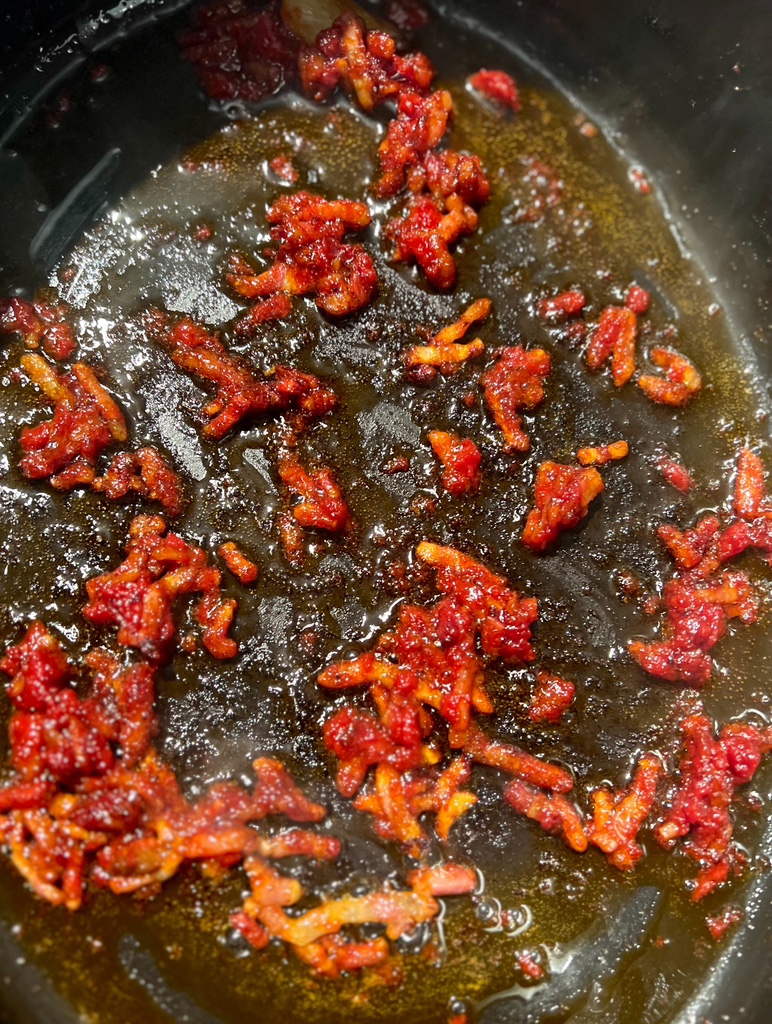
Deglaze all of this with red wine. Add half of the red wine and stir to dissolve the mixture at the bottom of the pot. Let this simmer until the liquid has the consistency of syrup. Then add the second half of the red wine and repeat this process.

Stock is now added to this deep dark and flavourful sauce base. We chose beef stock, but poultry or vegetable stock can also be used.
Now add the contents of the pan and the parsley stems. For even more depth of flavour, you can optionally add a teaspoon each of coriander and allspice seeds. If you are not in a hurry and want to extract more flavour, let this simmer for 30 minutes.
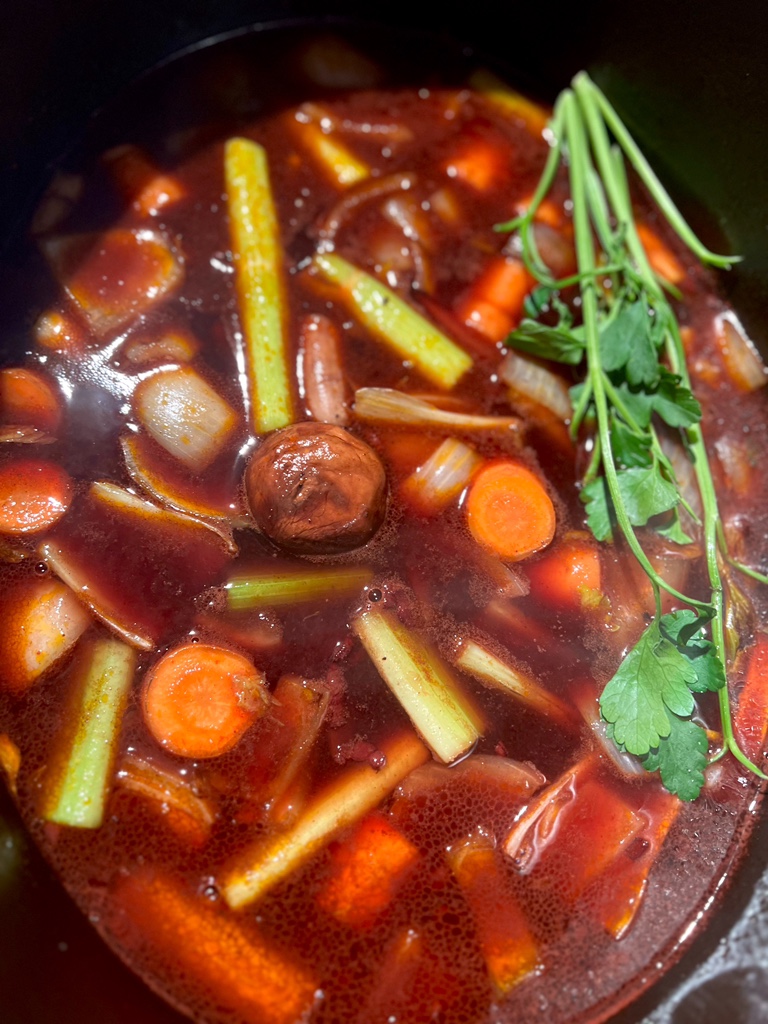
Then (if you want to speed things up: immediately) place the rolls on top of the vegetables, put the lid on and braise over a low heat (3 out of 10 for us) on the cooker or in the oven at 160 degrees Celsius for 45 minutes. Turn the rolls once halfway through.
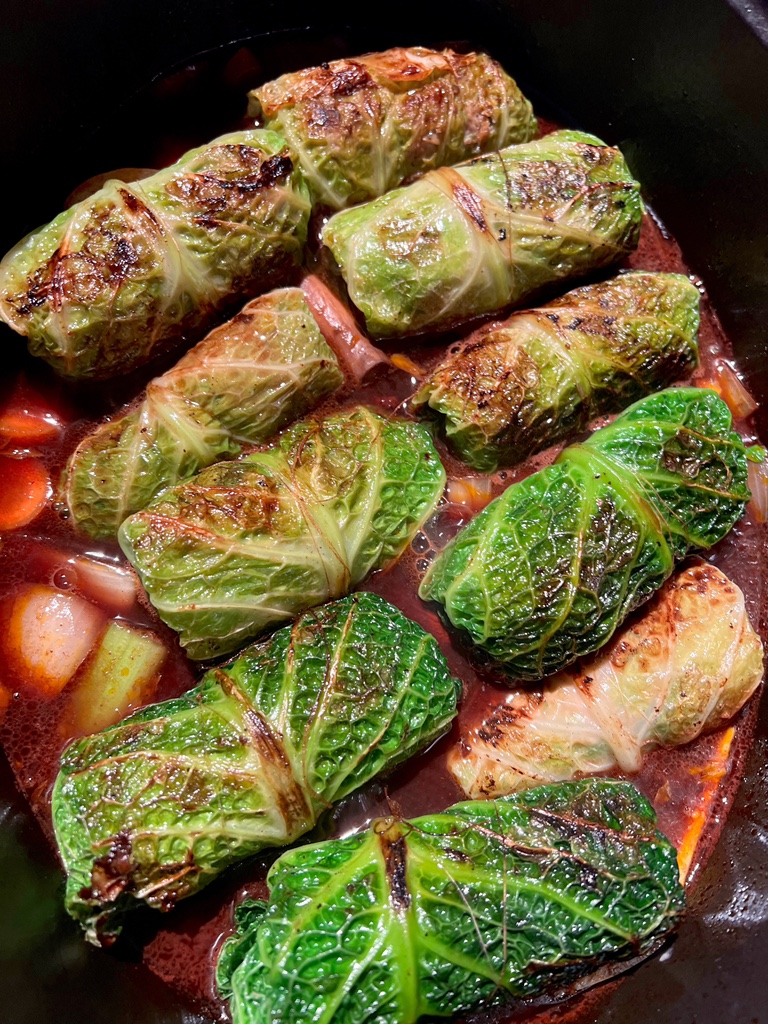
Now the rolls are cooked, so take them out of the sauce and put them aside. If you have tied them with string, remove it now. Add a sliced garlic clove and a few pieces of lemon zest to the sauce and let this simmer gently for another 10 minutes.
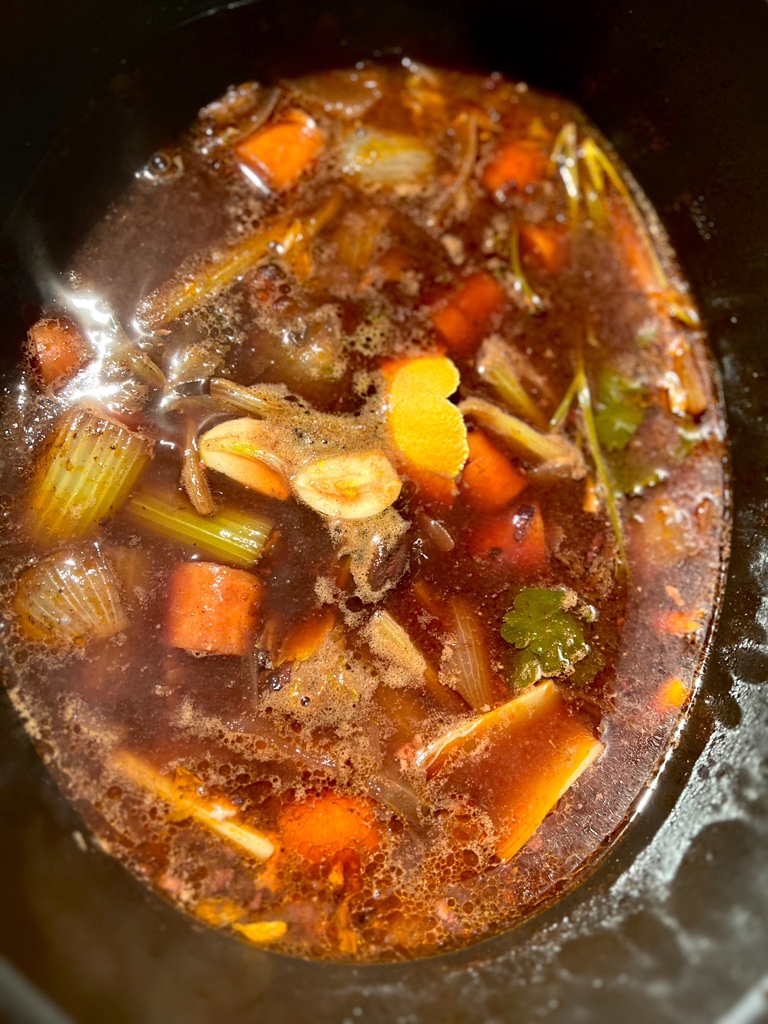
Then pass the sauce through a sieve – a pointed sieve or strainer (also called a chinois) is best for this. Squeeze the vegetables well with a ladle so that no liquid or flavour is wasted.
Bring the sauce to the boil and let it reduce for a few minutes to create even more flavour intensity. Season to taste with salt and some ground pepper.
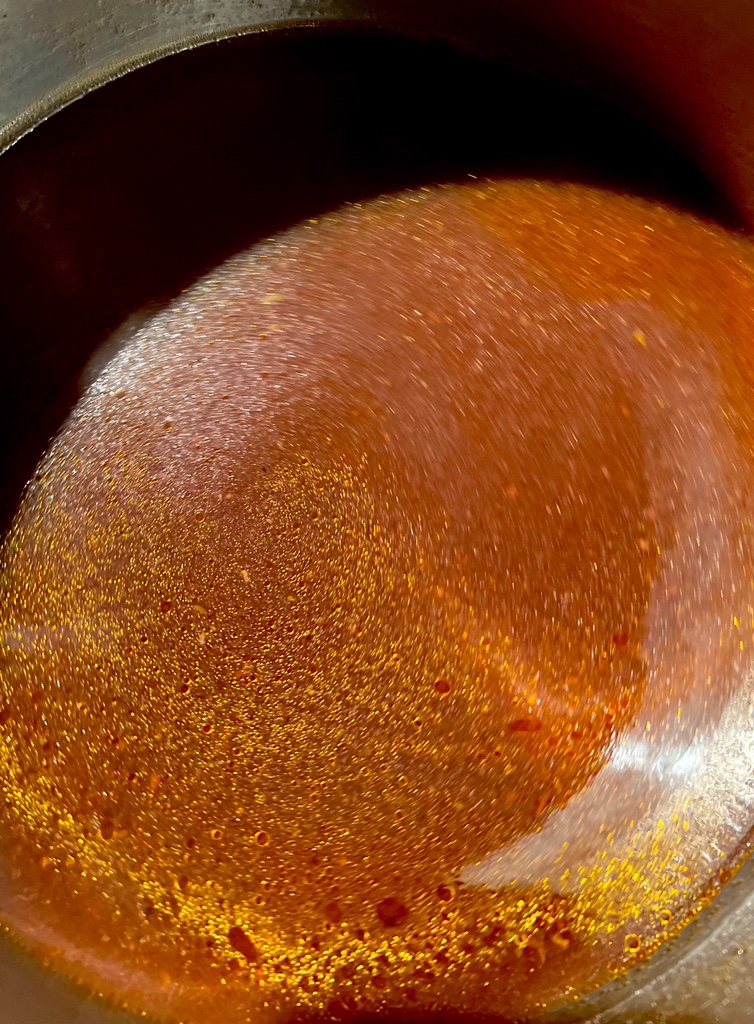
To bind the sauce, dissolve one teaspoon of starch completely in a little cold water and add the milky liquid to the boiling sauce, which will thicken quickly. The water must be cold so that the starch does not form lumps. If the sauce is still too thin for your liking, repeat the process.
Finally, whisk a little cold butter into the sauce to round off its flavour, bind it further and give it a nice gloss.
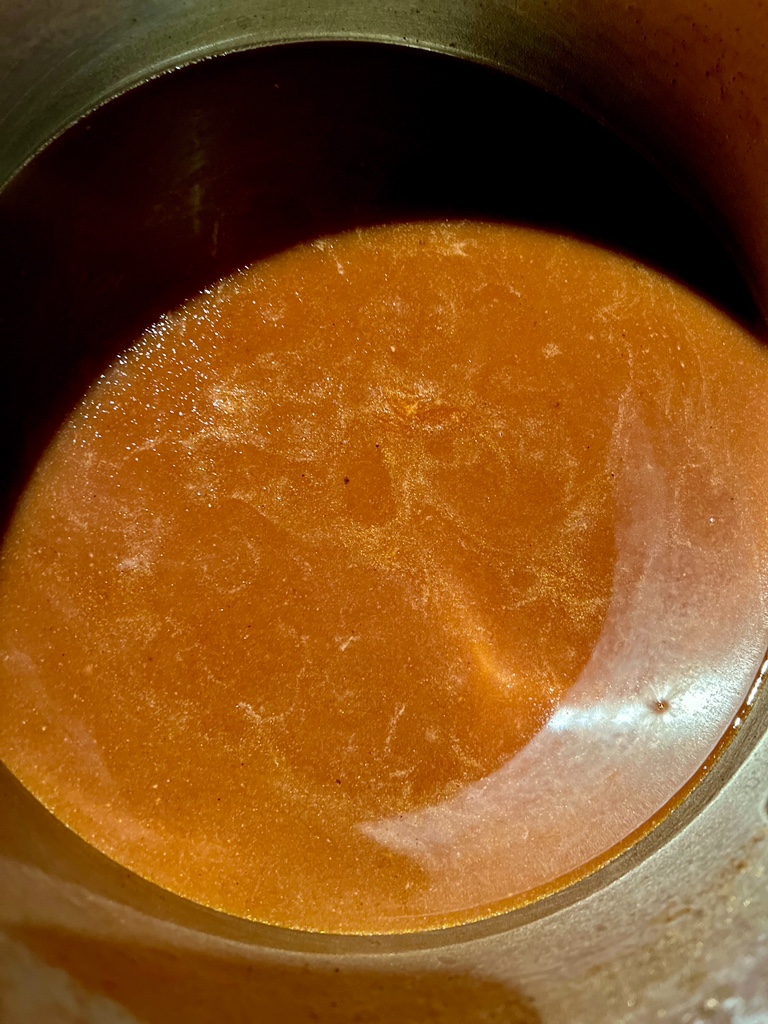
The rolls are gently warmed in the sauce and in our home served with mashed potatoes.
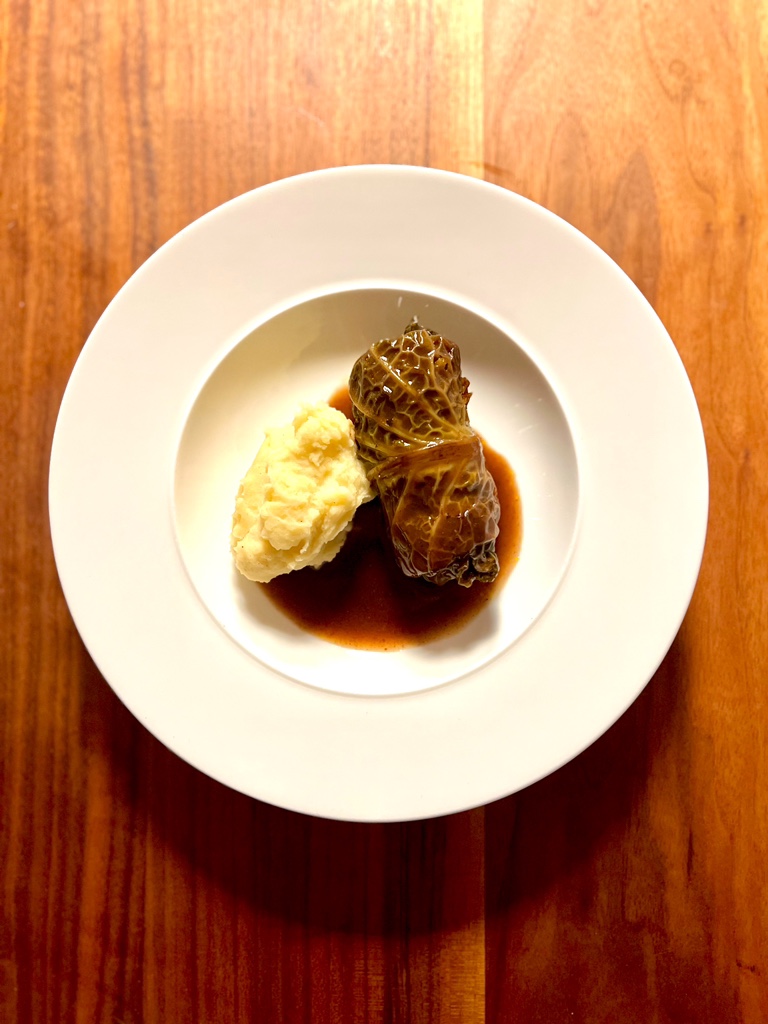
Enjoy.
And may the taste be with you.
Ingredients (for 4 people):
1 savoy cabbage or 1 white cabbage
For the filling:
500 g minced beef
100 – 150 g smoked raw sausage
1 medium onion
1 tbsp butter
80 g toast (or 1 dry bread roll)
120 ml milk
2 eggs
1 tablespoon mustard (medium hot)
3 stalks parsley
2 tsp dried marjoram
optional: some zest of an organic lemon
salt and pepper
For the sauce:
100 g diced bacon
a little icing sugar
1 tbsp tomato paste
150 ml red wine
a little oil
2 carrots
1 onion
2 stalks of celery (or some celeriac)
600 ml beef stock (alternatively poultry or vegetable stock)
1 clove garlic
a little lemon zest
salt and pepper
optional spices: 1 tsp each of allspice and coriander seeds
1 – 2 tsp starch
1 – 2 tbsp cold butter
